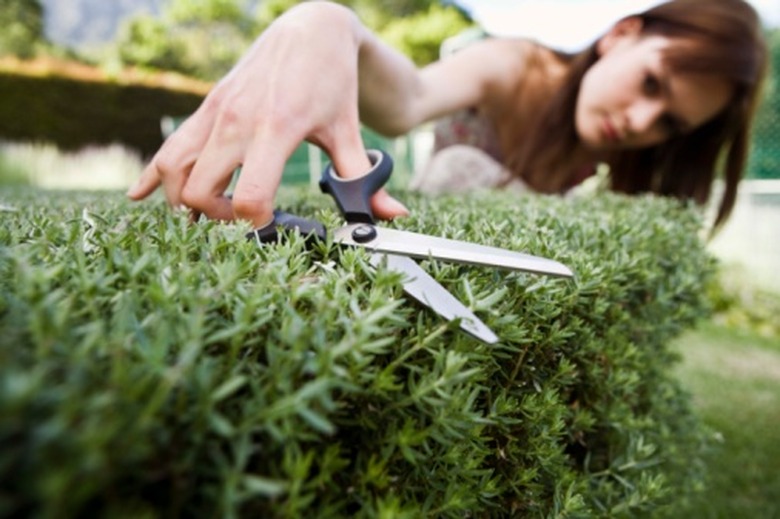What Are The Causes Of Bushes Turning Brown?
Bushes — whether evergreen or deciduous — play a major role in landscaping a lawn. However, that role can sometimes be threatened when the leaves or needles change to an unhealthy brown instead of remaining an eye-catching green. Usually the plant can be returned to a healthy look with a little bit of detective work.
Watering
A lack of water or too much water can often cause brown leaves. If just the tips or margins are brown, check to make sure the plant is getting enough water. If the whole leaf is brown, it is usually a sign that the water problem is more than superficial — the roots themselves are severely lacking in moisture. Leaves that appear black, especially along the veins, or leaves turning more yellow are often a sign of too much water, especially during the spring months or those periods when there are numerous rains.
Temperature Extremes
Extremely hot days in summer and bitterly cold winters can often lead to brown leaves on bushes. Younger plants are more affected by temperature extremes than older plants. Often additional watering or erecting some type of shade can help younger plants cope with temperature swings. The affected bush or bushes will usually return to a healthier look as soon as the temperatures become more normal for the region. Often the weather extremes will make the bush more susceptible to damage from insects or disease.
Insect and Animal Damage
An insect infestation can cause plant leaves to turn brown or appear damaged. While geographic location and time of year has much to do with the pest causing the damage, a good starting point is to look for bag worms, spider mites, aphids, wood borers and leaf mites. Rabbits, squirrels, deers and other animals can also cause damage leading to brown leaves. There are numerous insecticides and animal repellents that can help with this type of leaf browning.
Plant Diseases
If watering problems and pests of all types have been ruled out, check for diseases such as pestalotiopsis tip blight, powdery mildew, blossom wilt and bacterial canker among others. Check with your local county extension service or a nearby nursery to find out what diseases might be in the area, since many of these are linked to environmental conditions. Often they will be able to offer tips and guidelines for treating the specific ailment.
